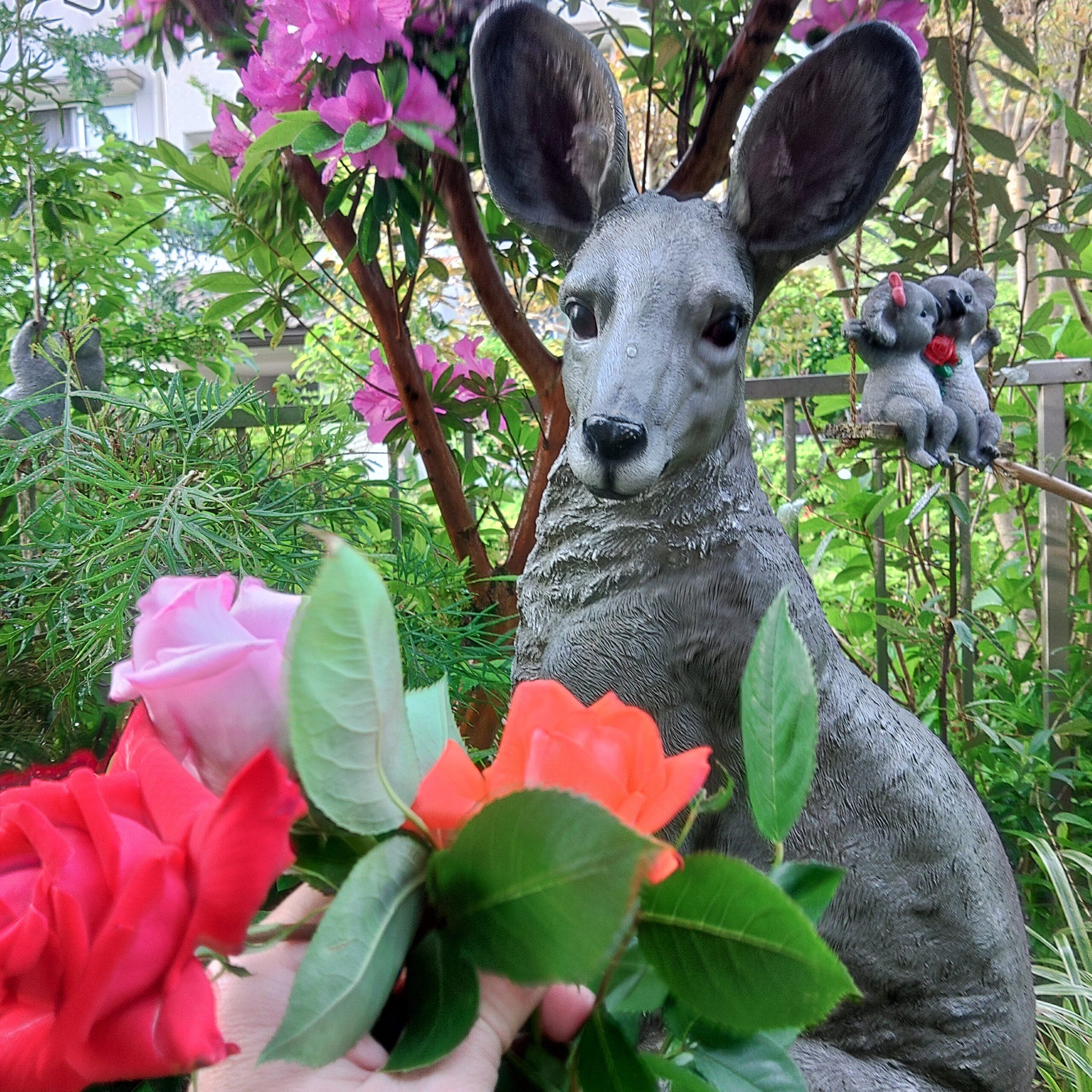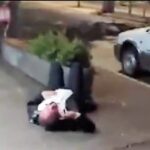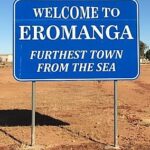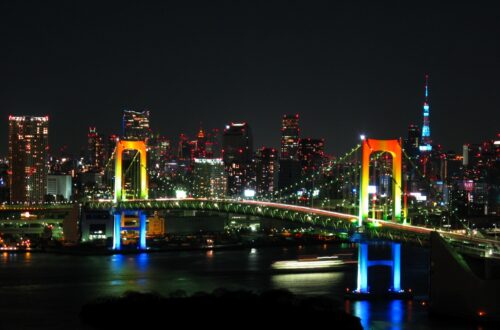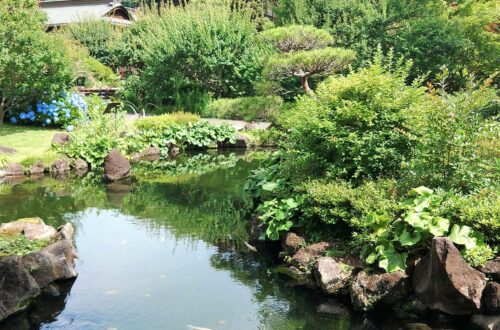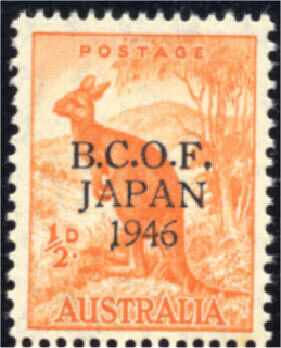 Not long after the end of World War II, John Collins would sit and eat sandwiches at Ground Zero in Hiroshima, then sift through the rubble left from the city subjected to the world’s first nuclear attack for items he thought could become historically valuable.
Not long after the end of World War II, John Collins would sit and eat sandwiches at Ground Zero in Hiroshima, then sift through the rubble left from the city subjected to the world’s first nuclear attack for items he thought could become historically valuable.
戦後間もなく、ジョン・コリンズ氏は、広島市の原爆中心地に座ってサンドウィッチを食べてがれきの中に歴史的に価値のあるものを探し回ったことがあった。
Collins was then a 19-year-old sapper with the Australian troops making up the bulk of the British Commonwealth Occupation Forces (BCOF) stationed in Japan from February 1946 to April 1952.
当時、コリンズ氏は、1946年2月から1952年4月の間で英国連邦進駐軍(BCOF)の約9割で構成したオーストラリア軍の一人だった。19歳だった。
Signs of Radiation Sickness?
But weeks after his Ground Zero foraging, Collins was hospitalized after he started passing blood in his urine. While being treated, his hair started falling out in large clumps.
しかし、広島での「宝探し」数週間後、コリンズ氏が尿血が始まり、入院することになった。治療中、激しい脱毛も始まった。
He laughed at the time. He has had little to laugh about in the 60 years since.
その時笑い飛ばしたが、以降の60年以上に渡って笑うことあまりない。
After enduring chronic itches, rashes, allergies, colds, and the occasional dizzy spell, Collins was in 1986 diagnosed with a kind of bone marrow cancer called polycythemia vera.
慢性的なかゆみ、湿疹、アレルギーやかぜを耐えた後、1986年に骨髄がんの一種である真性多血症という非常に珍しい病気に診断された。
Now — over 80, and 20 years after being told he had no more than two years to live — the BCOF veteran firmly believes his illness stems from radiation in Hiroshima when he was in the prefecture on a tour of duty in 1947.
現在、80歳を超えて「人命が2年もないよ」と言われて約20年後、同氏が1947年広島に派遣された時で被爆した放射能が病因だと思っている。
Scores of Occupation troops from the United States, Britain and New Zealand who served in the nuclear-bombed cities of Hiroshima or Nagasaki and subsequently suffered from radiation-induced diseases have been given medical treatment and disability pensions from their governments.
戦後、日本を占領した連合国の中被爆したとして米国か英国やニュージーランド各政府が復員兵に対して治療及び恩給を支給した。
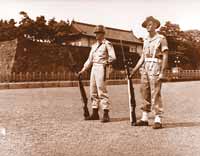 But in Australia, where BCOF veterans call themselves the “Forgotten Force” because of what they believe is neglect by authorities, the government refuses to acknowledge servicemen like Collins who say they were affected by residue radiation in Hiroshima.
But in Australia, where BCOF veterans call themselves the “Forgotten Force” because of what they believe is neglect by authorities, the government refuses to acknowledge servicemen like Collins who say they were affected by residue radiation in Hiroshima.
しかし、オーストラリアでは政府が被爆の主張を認めない。コリンズ氏及び同じように被爆したと主張している元同僚は、同政府の見解を怠惰と言い、そのために自分たちを「忘れられた軍」だと呼び合っている。
“They have no honor,” Collins says, referring to the Australian Department of Veterans’ Affairs (DVA) officials who refuse to recognize the effects of Hiroshima’s radiation. “I get a war pension for other so-called minor matters — emphysema, PTSD and cervical spondylosis from my back fracture, but they don’t accept the bone cancer.”
「(豪復員兵省)は人情がない。年金をほかの病気のために支給されているががんにかんする病気が認められない」とコリンズ氏がいう。
BCOF Based in Hiroshima Prefecture
The BCOF was based in Hiroshima Prefecture, initially in Etajima, then in Kure, a port city about 20 kilometers from the city of Hiroshima.
英国連邦軍の本部が最初に広島県江田島市にあったが、その後広島市からおよそ20キロ離れた呉市となった。
At its peak in 1946, the BCOF consisted of about 45,000 members, the majority of them Australian, but also including troops from Britain, India and New Zealand.
1946年のピークにはBCOFが約4万5千人に構成されて、そのほとんどがオーストラリア人だったが、イギリス人、ニュージーランド人とインド人もいった。
About 20,000 Australians served in the BCOF and were accompanied by dependents of an unknown number, but believed to exceed 1,000.
BCOFには約2万人のオーストラリア人が入り、扶養家族も1000人以上となった。
Australian authorities have never conducted a formal study on the overall health of BCOF veterans, nor made official lists of dependents, and exact numbers remain unknown.
オーストラリア政府はBCOFに関する総合的な健康調査が行っておらず、扶養家族人数でさえ正式な数を分かっていない。
BCOF Families Report High Incidence of Mysterious Illnesses
Service members and their relatives say their easy access to Hiroshima and widespread consumption of produce from Hiroshima Bay exposed them to radiation contamination and led to extraordinarily high instances of cancer and premature death or illness.
BCOF復員兵及びその家族が自由に原爆投下後の広島に自由に出入りした上に広島湾から習得した魚介類などを大量に摂取したことによって被爆につながったという。
“It is estimated through internal research that some 70 percent of BCOF male and female service personnel suffered from cancer-related complaints attributed to the effects of radiation. There are some cases of their children suffering cancers and physical defects,” says Ron Orwin, 80, a BCOF veteran who blames radiation contamination during his tour in Japan from November 1947 to May 1948 for a variety of ailments he has suffered, including chronic dermatitis and skin cancer.
「内部検査の資料によってBCOF男女の約7割が放射線関連ガンとなったことが分かった」というのが同じくBCOF復員兵ロン・アーウイン氏。「その子供たちもガンが奇形児となった場合もあった。」アーウイン氏自身も慢性アトピー及び皮膚がんが広島で被爆したことからだという。
“We are firmly of the opinion that such diseases were as a result of exposure to radiation even six months after use (of the atomic bomb). The government refuses to accept any connection between the irradiation of the Hiroshima area, claiming that (the bombing) was an air burst with no major long term fatal effects to the local Japanese and Occupation forces.”
「原爆投下6か月過ぎても放射能がまだ散らかれていた。(豪)政府は一切被爆を認めないので、原爆が一瞬の爆発であり、現地の日本人及び進駐軍人に一切長期的な影響がなかったと一点張りしている」とアーウイン氏がいう。
Rosemarie Carman, who lived in Japan from age 4 to 9 while her father served in the BCOF, says that stories of force dependents who had died from cancer were common.
BCOF員の扶養家族として4歳から9歳の間日本で滞在したローズメリー・カーメン氏は、扶養家族のガンによって死亡率が異常に高いだという。
She had been hampered by the lack of an official list of dependents, but disclosed pages and pages of detailed examples she had compiled of BCOF members or their relatives who had died or fallen ill from cancer and other diseases they blamed on radiation from Hiroshima.
正式な記録がないことによって具体的な数字を出すのが難しいと言いながら、自身でBCOF復員兵及びその扶養家族が相次いで被爆性ガンやその他の病因で死亡した人の例をリストアップしたという。
“I’m getting too morbid by listing it all,” Carman, now 64, says.
「もう、リスト作りがうんざり」とカーメン氏がいう。
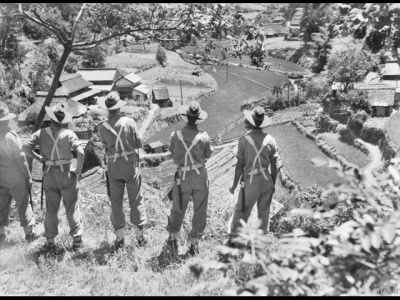
Gov’ts Dismiss Radiation Claims
A DVA spokesman, meanwhile, says “DVA is not aware of any data that supports this claim.”
豪復員兵省は、「このような出張に裏付けるデータの存在を認識しない。」
In 2002, the DVA commissioned the Australian Radiation Protection and Nuclear Safety Agency (ARPANSA) to report on radiation dose estimates that could have affected BCOF personnel.
2002年には同省がオーストラリア放射能保護原発安全庁(ARPANSA)を委託し、BCOF関係者の被爆能動検査を行った。
ARPANSA’s report was based on upper limit estimates and worst case scenarios.
ARPANSAの報告書は最大限の放射能で算定し、最悪の状態に基づいて検査したという。
A similar report looking into atomic radiation exposure from consumption of seafood in Hiroshima Bay was also carried out by Australia’s National Research Center for Environmental Toxicology (NRCET).
オーストラリア国立環境毒物学研究所(NRCET)も同様の報告書を作成し、広島湾から取得した魚介類の放射能汚染を検査した。
Based on the findings of these reports, the DVA decided that, although individual cases needed to be considered, it was generally unlikely BCOF personnel would have been contaminated by radiation in Hiroshima.
これらの報告書に基づいてDVAは、個人差があるもののBCOF関係者が広島で放射能汚染の被ばくした可能性が極めて低いと判断した。
“The essential reason for the low exposure is that by the time the first Australian personnel arrived in the area, more than six months after the bomb detonation, decay and dispersion of the radiation meant that there was little residual radiation remaining,” a DVA Statements of Principal (SOP) report issued in July 2006 says.
同省が2006年7月に発行した原則覚書(SOP)は、「オーストラリア軍が同地域に到着した時点では原爆投下が既に半年が経過し、放射性崩壊及び分散により残留放射線が微量だった」とした。
A DVA spokesman said veterans’ claims for disability pensions are determined by these SOPs, which are rules that decide the factors behind a disease that is the subject of a claim.
同省広報部によると復員兵の労災届などは、このようなSOPの内容によって決められている。
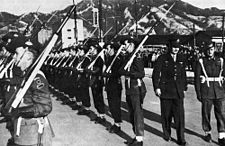 “The SOPs are developed by an independent statutory authority called the Repatriation Medical Authority (RMA). The RMA consists of a panel of five practitioners eminent in fields of medical science. The role of the RMA is to determine SOPs for any disease, injury or death that could be related to military service, based on sound medical-scientific evidence. The RMA only determines SOPs after extensive investigations of the medical and scientific literature and research worldwide, relevant to each condition,” the spokesman says.
“The SOPs are developed by an independent statutory authority called the Repatriation Medical Authority (RMA). The RMA consists of a panel of five practitioners eminent in fields of medical science. The role of the RMA is to determine SOPs for any disease, injury or death that could be related to military service, based on sound medical-scientific evidence. The RMA only determines SOPs after extensive investigations of the medical and scientific literature and research worldwide, relevant to each condition,” the spokesman says.
「SOPは、独立法人局である復員医療局という機関が展開する。RMAは、医療覚有識者5名で構成されている。RMAの役割は、医療科学に基づいて病、怪我及び死亡が軍事関係であるかどうかを判断することだ。各病状に関して徹底的な世界中の医療的かつ科学的な研究を調査した上でSOPを決めるのだ」という。
Scientists at the Radiation Effects Research Foundation (RERF) in Hiroshima, a research body funded by the Japanese and U.S. governments, support the findings of the Australian organizations.
広島市にあり日米両政府が出金する財団法人放射線影響研究所は、オーストラリア各公的機関の調査結果を支持する。
“There are two types of residual radiation: induced radioactivity and radioactive fallout. Within six days of the bombing, residual radiation levels in Hiroshima had declined dramatically.
「残留放射線は誘導放射能と放射性降下物という2種類がある。原爆投下6日間以内は、残留放射線は劇的に減少した」とRERF広報部のクリス・トシノリ氏がいう。
“So in February 1946, six months after the atom bomb was dropped, residual radiation from the atomic bombing would have been almost the same as natural levels.
「なので、原爆投下半年後である1946年2月には、残留放射線がほぼ自然放射線同等だ」という。
“As for radioactive fallout in Hiroshima Bay and other areas in the region, there is no data at RERF. However, the amount of radiation that can be absorbed through fallout or drinking contaminated water is only a slight amount of what would be obtained from direct exposure to the radiation emitted from the atomic bombing and is not a great reason for fear,” Toshinori Kurisu of RERF’s public relations and publishing department, says.
同氏が続く。「広島湾及び周辺のその他の地域について、RERFではデータがありません。しかし、原爆投下によって直接放射能に被ばくされることに比べて放射性降下物や水からの摂取によって受ける放射能量が微量であり、恐れることはない。」
“RERF’s research has showed that this data has not influenced risks of such things as cancer. Even with exposure to external radiation, the amount of radioactivity detected 3 kilometers or further from the bomb’s hypocenter was extremely low, virtually near zero.
「RERFの研究は、がんなどの発症率に影響がないと検証した。たとえ外部放射能に露出されても原爆投下中心地から3キロメートル以上離れた地点では放射性がゼロに近い微量だった。」
“Based on RERF’s data, the likelihood of anybody exposed to radiation about 5 to 10 kilometers away from the hypocenter being more susceptible to cancer is virtually nil.”
「RERFのデータによると中心地から5~10キロメートル離れた人が放射能被ばくとなった可能性がゼロに等しいのだ」という。
Radiation ‘Absolutely, Completely Feasible’
But not all experts rule out the possibility of contamination.
しかし、専門家の見解が一致している訳でもない。
 Sue Rabbitt Roff, a medical sociologist at the Center for Medical Education at Dundee University in Scotland and author of “Hotspots: The Legacy of Hiroshima and Nagasaki,” argues that it was “absolutely, completely feasible” for BCOF veterans to have suffered from the effects of radiation in the atomic bombed city.
Sue Rabbitt Roff, a medical sociologist at the Center for Medical Education at Dundee University in Scotland and author of “Hotspots: The Legacy of Hiroshima and Nagasaki,” argues that it was “absolutely, completely feasible” for BCOF veterans to have suffered from the effects of radiation in the atomic bombed city.
イギリス・スコットランドのダンディ大学医療社会学者であり、「ホットスポット:広島と長崎の遺産」の著者であるスー・ラビットロッフ教授は、BCOF復員兵が広島で被ばくしたことが「絶対に、完璧にあり得る話だよ」という。
She says political considerations such as seeking to avoid criticism for unleashing such a destructive weapon made it in the best interests of the United States to make sure any long-term effects of the atomic bombs were minimized.
同教授は、恐ろしい武器である原爆を利用した米国政府にとってその影響を最大限まで減少するように働きかけることが当たり前だという。
“The American government, which won the war, had a lot at stake to deny (the atomic bombing) was anything worse than a big firebomb. It was Australian journalist Wilfred Burchett who first revealed there were still ongoing troubles after the first dreadful burns,” she says.
「戦勝した米国政府は原爆が大きな爆弾にしか過ぎないという見方を広げることが重要な価値があって、実際に原爆直後の恐ろしい火傷以外、原爆の恐怖的な効果を世界に初めて訴えたのはオーストラリア人記者ウィルフレッド・バーチェット氏だった」という。
“The American government put into place research agencies which would never take seriously the possibility that there was a long contamination of Hiroshima and Nagasaki.”
「米国政府が研究機関を設置したが、それらの機関が広島・長崎(の原爆)によって長期的に渡る汚染が可能であることを真剣に検証しようとしないようにした」という。
Rabbitt Roff continues: “(The BCOF) was (in Hiroshima) in early ’46, so it was six to eight months after the detonation. (Their claims of irradiation are) absolutely, completely feasible. You try going into (the site of the world’s worst nuclear accident at) Chernobyl today — 20 years later — you won’t get near the place. You try to go to (Australia’s) Montebello Islands, where the British tested their atomic weapons 55 years ago — there’s a big sign up saying ‘Do not stay longer than 1 hour because of residual contamination.’ Try going to Maralinga (another British nuclear weapon test site in Australia).”
ラビットロッフ教授が続く。「46年始にいったので、投下6~8か月しか過ぎていないので被ばくされた主張が絶対的に完璧にあり得る話だ。20年過ぎた今でも(原発事故があった)チェルノビリ入ろうとすると近い所までも入れてくれないよ。55年以上前イギリス軍が原爆実験が行ったオーストラリアのモンテベロ諸島に行くと(残留放射線汚染が危険であるため1時間以上ここにいないように注意)という大きな看板が出ている。(オーストラリアで別の英軍原爆実験地点である)マラリンガに立ち入ろうとすると無理だよ」という。
Meanwhile, ailing BCOF soldier Collins — six decades after his visits to Hiroshima’s Ground Zero — and the dwindling numbers of other atomic veterans like him are forced to continue to battle bureaucracies.
このような議論が続く中コリンズ氏のようなBCOF復員兵たちが人数を年々少なくなりながら広島原爆グラウンド・ゼロを立ち寄って60年以上過ぎて今でも官僚たちと戦い続くことを余儀なくされている。
Their fight is made increasingly harder by advanced age and the declining health that accompanies it.
年齢増加及び健康の後退により、戦いづらくなっている一方だという。
“Their main weapon is procrastination,” Collins says. “They keep delaying things as long as possible till the old veteran gets sick of waiting around and despairs of getting a result and walks away. Or dies.”
「(官僚)の主な武器が先送りということだ。復員兵が飽きて諦めるまで先送りする。それか死ぬまでね」という。
 Robin Gerster, an associate professor at Monash University in Melbourne and one-time associate professor of Australian Studies at the University of Tokyo, is one of the foremost experts on Australia’s role in the postwar occupation of Japan.
Robin Gerster, an associate professor at Monash University in Melbourne and one-time associate professor of Australian Studies at the University of Tokyo, is one of the foremost experts on Australia’s role in the postwar occupation of Japan.
元東京大学豪州学准教授であり現オーストラリアメルボルン市にあるモナッシュ大学准教授であるロビン・ガースター氏は、日本の連合軍占領に関するオーストラリア有数の専門家である。
He says that BCOF veterans such as Collins rightly find it hard to equate the “evidence” of the unsympathetic medico-scientific establishment with their intimate knowledge of the inordinately high rates of sickness that has afflicted them and their families. “From a country which purports to cherish its servicemen and women, they are entitled to feel that their governments have handed them a raw deal.”
同准教授は、同情がなく医療科学機関の支配者層の「証拠」と実際に自身たち及び家族などの病の異常な多発率を自分たちの目で見たことを一致しづらいことが当たり前だという。
「この国(オーストラリア)が軍事のために血と汗と涙を流した男女を大事にすると言いながらひどい仕打ちされていると言われたら仕方がないと思いますよ」という。


